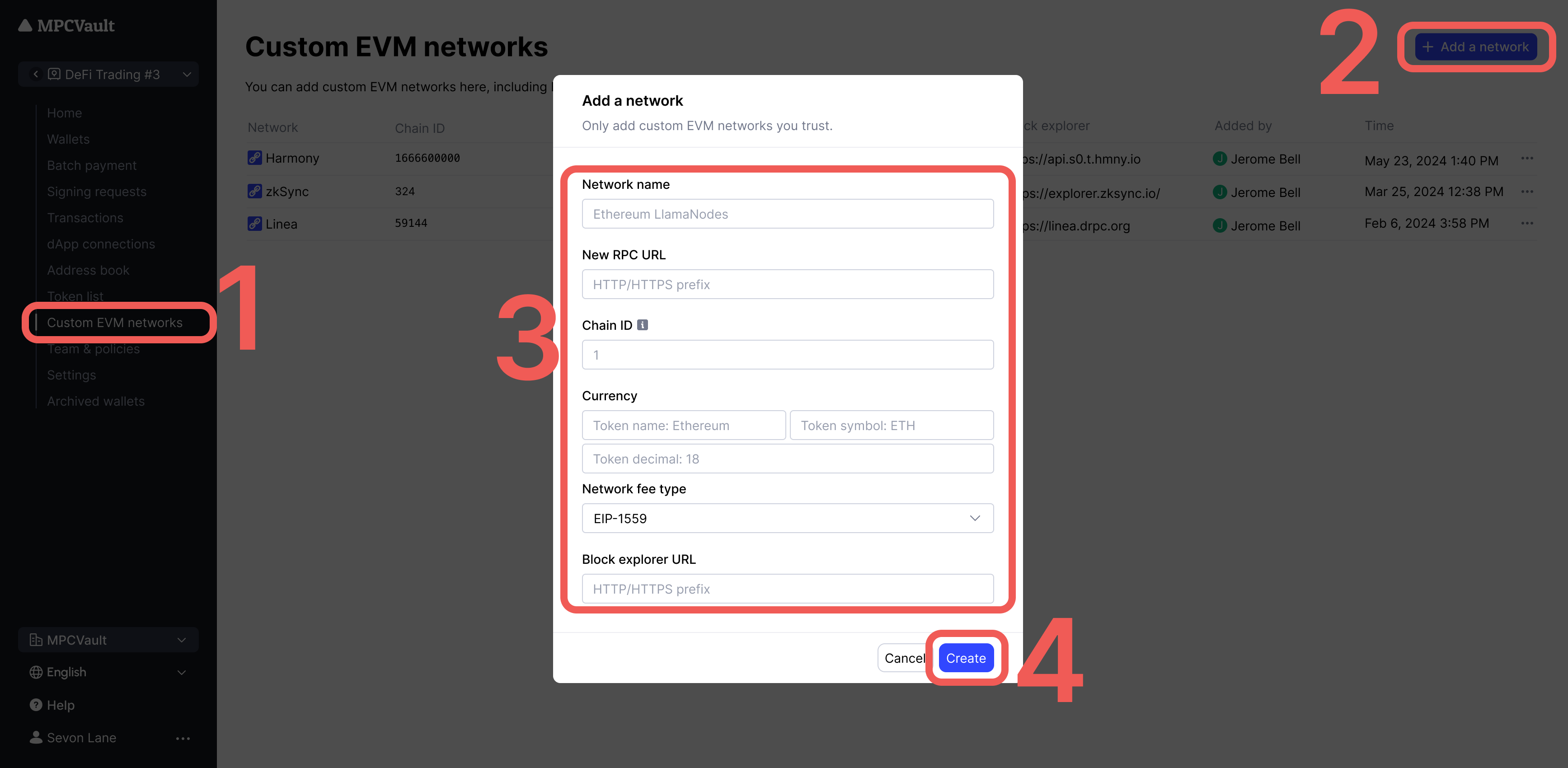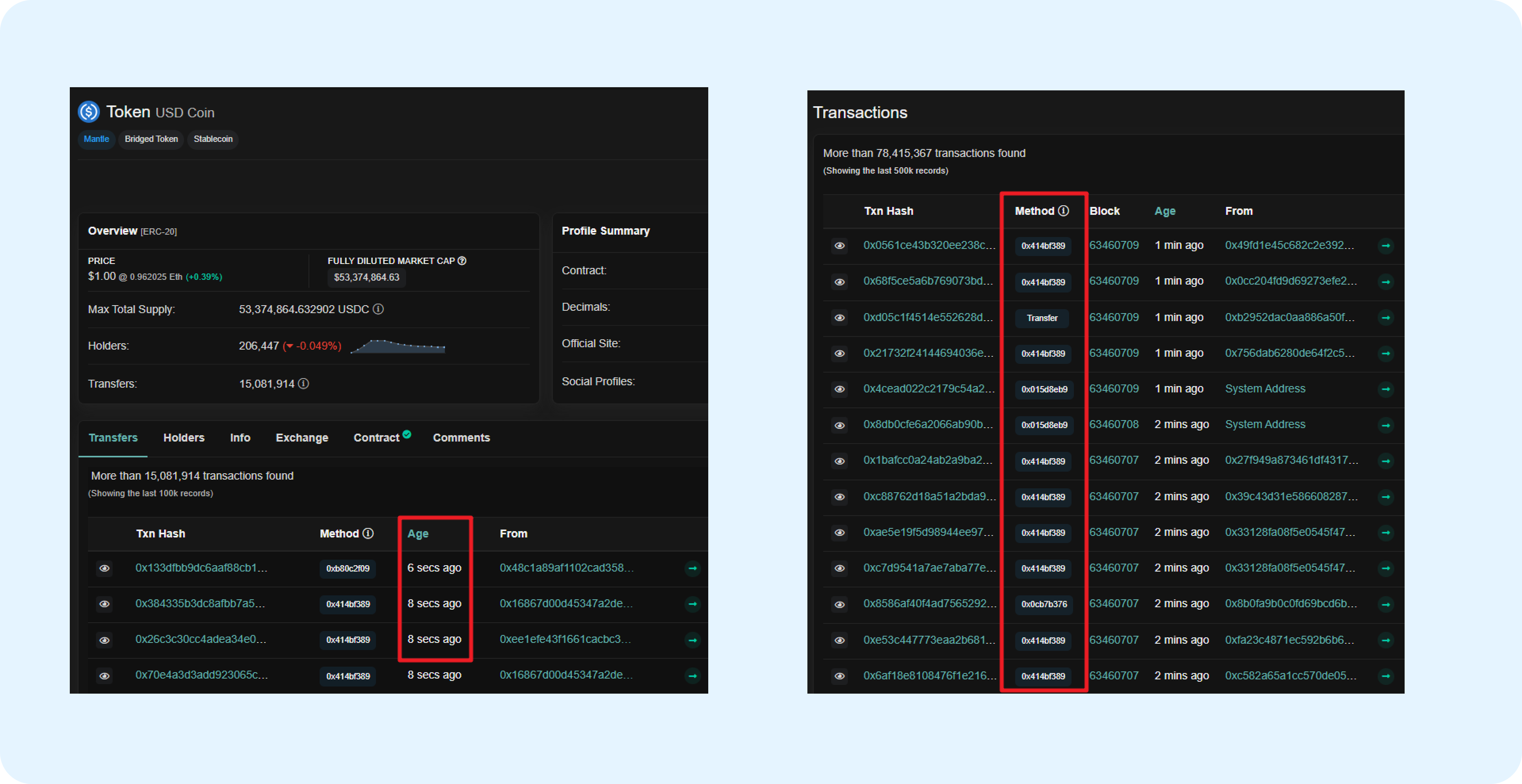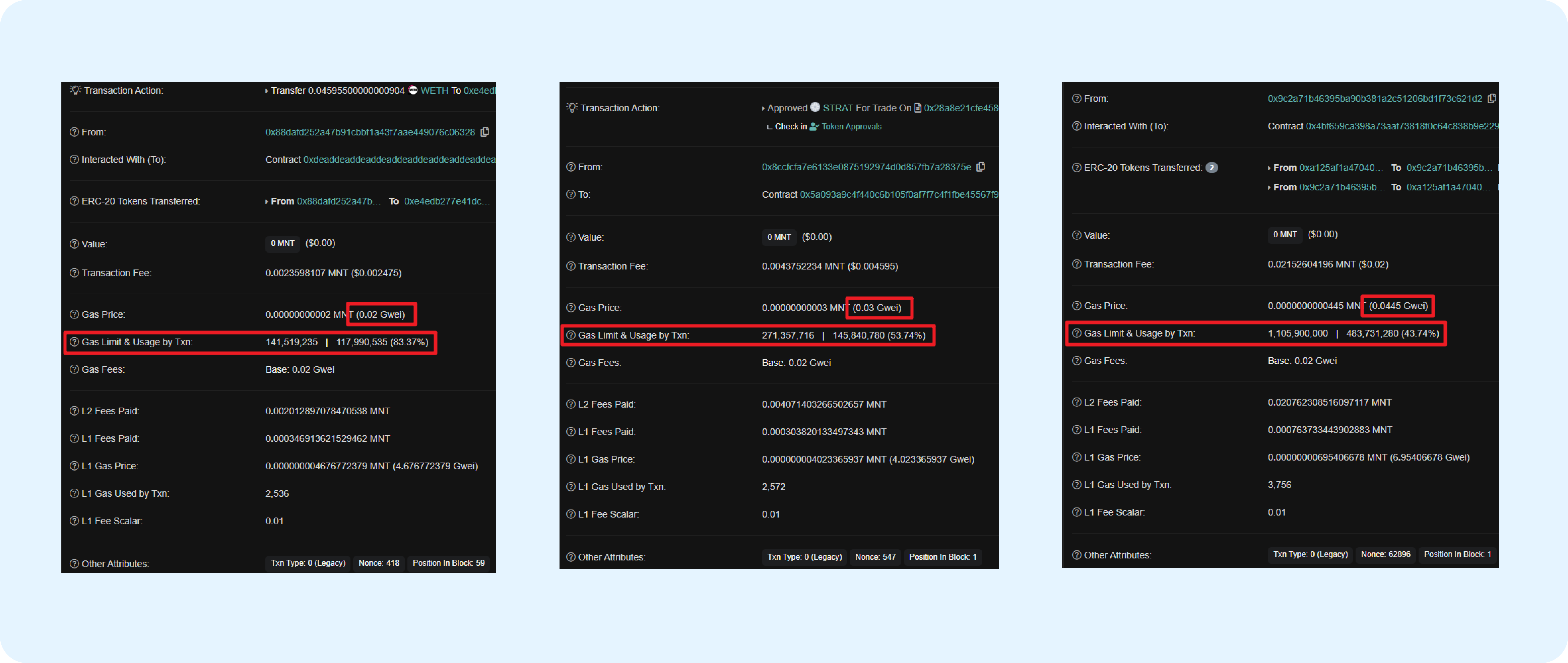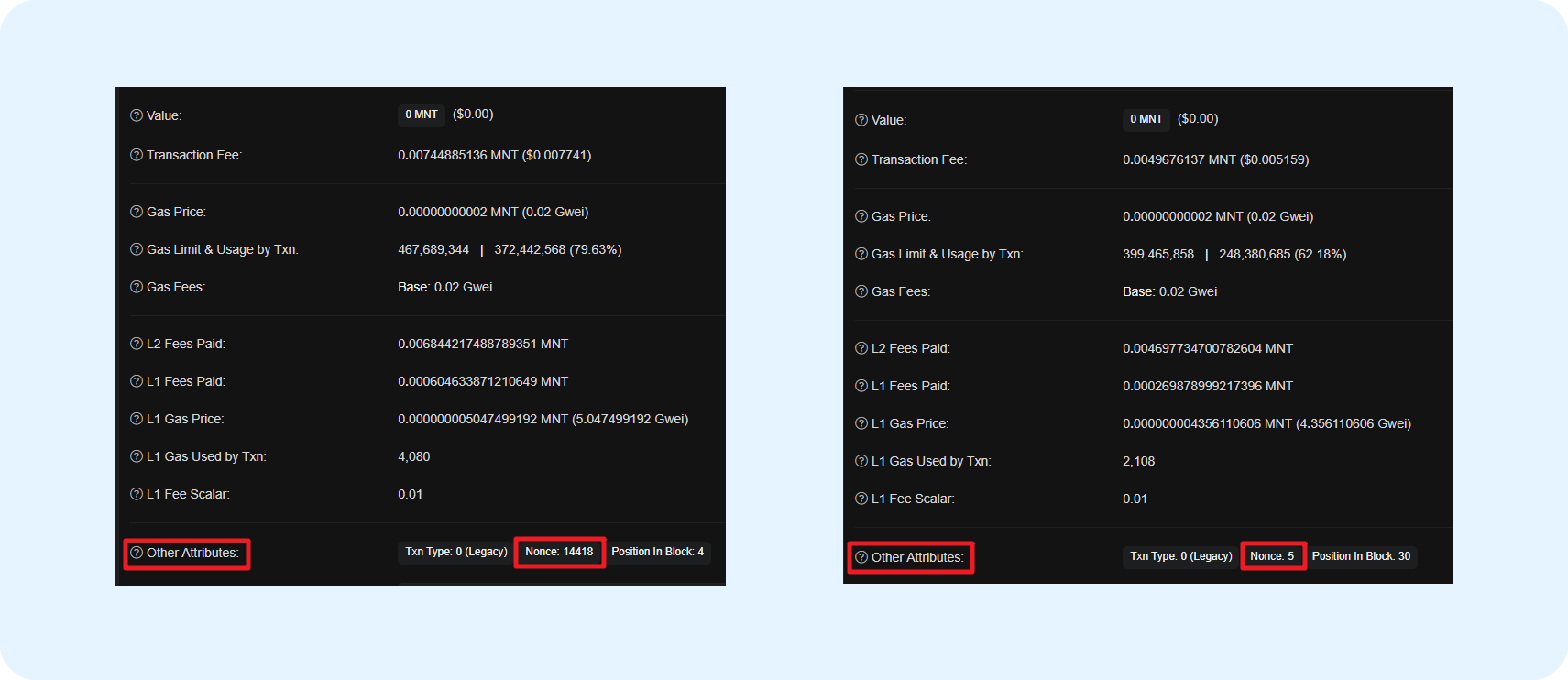How to use custom EVM networks?
MPCVault supports custom EVM networks. If you are unable to find the EVM chain you want to use when creating a wallet or adding multiple chains to a wallet, or if you accidentally send funds to the wrong EVM network when transferring to your MPCVault wallet, you can utilize the custom chain feature. The overall process is as follows:
-
Go to the "Custom EVM networks" page to add the chain you want to operate on.
-
Go to the "Token list" page to import the assets you want to operate on (native coins excluded). See How to Manage Your Tokens and NFTs for details.
-
On the wallet page, add the custom chain you have added to the wallet you want to operate on.
-
Carry out transfers and other operations just like using an Ethereum chain wallet.
How to add a custom network?
Follow these steps to add a custom network:
-
Visit console.mpcvault.com.
-
The vault manager enters the vault settings and opens the custom EVM networks page.
-
Click on "+ Add a network", fill in the relevant information, and ensure its accuracy and availability.
- Only add trusted RPC node URLs.
- Currently, only RPC nodes with the prefix 'http://' or 'https://' are supported.
- Chain and node information can be referenced from the Chainlist website.
- Token decimals can be obtained from the corresponding official website or reliable sources.
-
Click "Create", and the addition is completed if the submission is successful.

FAQ
Troubleshooting failed transactions
-
Transaction not found on Blockchain Explorer
-
The transaction may not have been broadcast to the blockchain yet due to network congestion or other reasons.
-
Try re-broadcasting the transaction to increase its chances of being confirmed.
-
You can locate the relevant signing request on the mobile application or web page. Look for the "Re-broadcast" button at the bottom of the page and click it to rebroadcast. If the rebroadcast fails, take note of the error message and refer to the errors listed below to adjust the transaction parameters.
-
-
Transaction failure
-
Transactions may fail due to inappropriate network fee settings.
-
Manually set a reasonable network fee to ensure the transaction is executed effectively.
-
The network fee can be referenced from the recent network fees of similar transactions on the Blockchain Explorer .
-
Transaction broadcast failed
-
Determine the reason for failure
- Please re-broadcast the transaction, refer to the reason for the failure and adjust the transaction accordingly.
-
Resolve "intrinsic gas too low" errors
If you encounter an "intrinsic gas too low" error while broadcasting a transaction, it's usually caused by setting the gas fee too low. Please follow the steps below to reset an appropriate gas fee, using the Mantle as an example.
-
Find the blockchain explorer corresponding to the transaction network. To find the blockchain explorer for a specific chain, you can enter the name of the blockchain you want to find in a search engine, along with the keywords "blockchain explorer" or "scan." For example, if you want to find the blockchain explorer for Mantle, you can search for "Mantle blockchain explorer."
-
After opening the blockchain explorer, locate the latest successful transaction of the same type.
-
If you explicitly want to transfer a specific token, you can directly search for the token's name or contract address in the search bar of the Blockchain Explorer. Then, find the latest successful transaction under that token.
-
If you know the type of transaction you want to perform, such as a token swap or interaction with a specific contract, you can identify the corresponding transaction type based on the "Method" field on the transaction list page of the blockchain explorer.
-
If you are unsure about the type of transaction you want to perform, you can find the three most recent successful transactions on the transaction list page of the blockchain explorer. Choose the largest "Gas Limit" value as a reference. Alternatively, you can also find the most recent transaction that interacts with a contract as a reference, as transactions that interact with contracts usually require a larger Gas Limit.
 tip
tipWhen searching for transactions in the blockchain explorer, carefully observe the "Txn Type" field in the "Other Attributes" section of the transaction details page. Ensure that the Txn Type of the reference transaction matches the Network Fee Type you selected when creating a custom chain in MPCVault.
- If you selected the Legacy type, find a transaction with Txn Type set to Legacy as a reference.
- If you selected the EIP-1559 type, find a transaction with Txn Type set to EIP-1559 as a reference.
-
-
On the transaction page, scroll down until you see the "Click to see More" section. (This is how it's labeled on Mantlescan; the exact wording may differ between block explorers.)
-
Find the "Gas Limit & Usage by Txn" field.
-
Gas Usage: Represents the actual amount of gas used by the transaction.
-
Gas Limit: Represents the gas limit for a given transaction type.
-
If the percentage after the value does not exceed 98%, you can choose any value between Gas Limit and Gas Usage as the gas limit for your transaction.
-
If the percentage after the value exceeds 98%, it is recommended that you find another similar transaction as a reference or appropriately increase the current gas limit value. This ensures that your transaction has sufficient gas to complete its execution.
-
-
Find the "Gas price" field.
- Observe the "Gas price" value on the transaction details page. As a reference, you can use the value of the current latest transaction or check multiple transactions of the same type and choose the highest one. To ensure your transaction is successfully executed, you can set the Gas price slightly higher than the "Gas price" value observed on the chain.

-
Return to MPCVault, initiate the transaction again, and reset the appropriate Gas Fee based on the above reference values.
-
-
Resolve "nonce too low" or other nonce-related errors
-
Re-initiate the transaction with the correct nonce.
-
For the first transaction of a wallet address, the nonce starts at 0 and increases sequentially. For subsequent transactions, the nonce should be one more than the nonce of the latest transaction on the blockchain.
-
You can use Blockchain Explorer to view the specific nonce.

-
Addressing signing request issues
-
Empty nonce and gas fee fields in signing requests
-
If nonce and gas fee fields are frequently empty during signing, the issue may be an unstable RPC node connection.
-
Please try to update to a more stable RPC node via the Web.
-
You can check the latest available public RPC nodes on the Chainlist website.
-